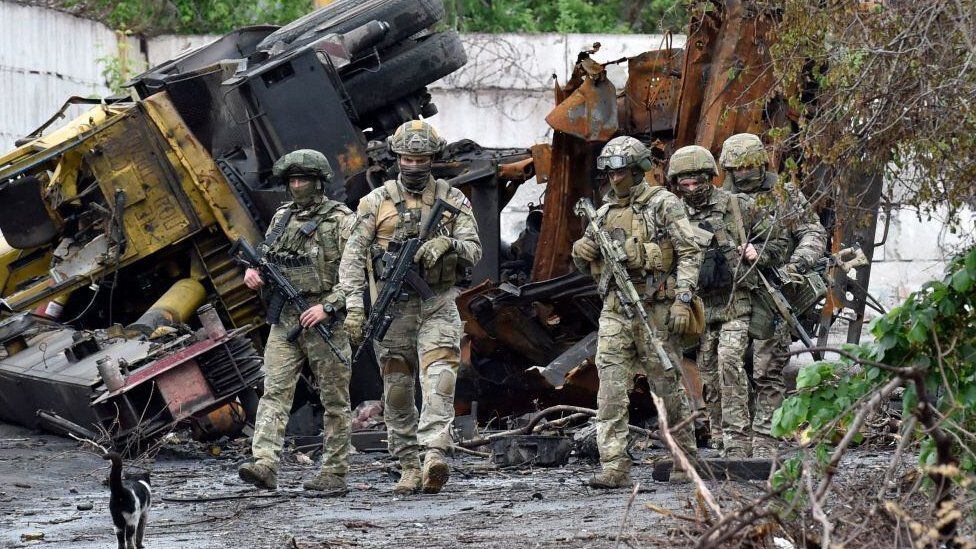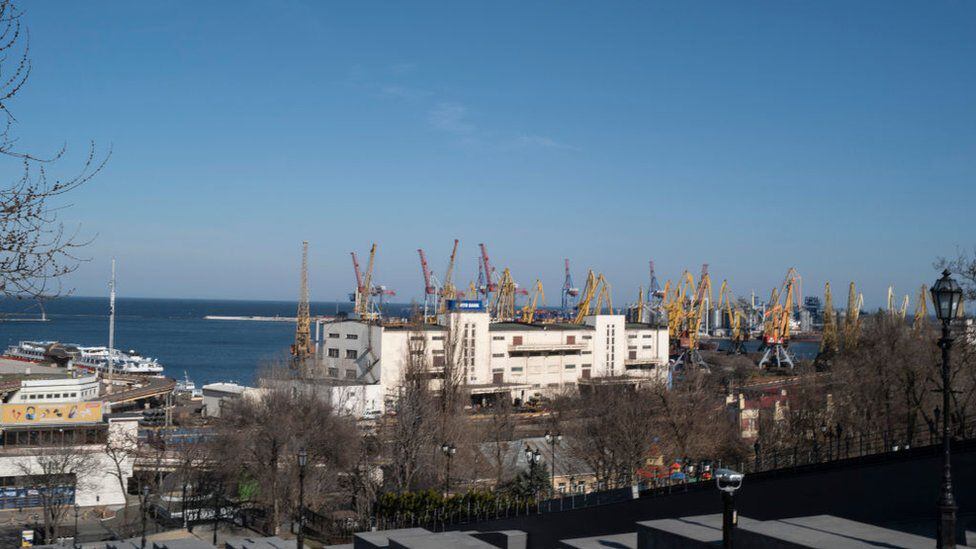the war of Russia in Ukraine it has become an increasingly exhausting and bloody affair, with each side wearing down the other. Both claim to have made progress. But they have also suffered setbacks.
Overall, Russia remains the dominant force and has significant military might, but has not achieved a quick victory as planned.
LOOK: 5 maps and graphs that show how the war between Russia and Ukraine has evolved in 3 months
Here, we take a closer look at some of the things that could tip the outcome of this conflict in favor of either side.
Earnings and loses
In the north, a Ukrainian counteroffensive successfully pushed Russian forces back from the city of Kharkiv. In the south, Russia eliminated the last pockets of resistance in the port city of Mariupol.
In both cases there have been high costs in terms of military and civilian casualties, but neither is likely to be decisive.
What happened in Mariupol and Kharkiv highlights The ebb and flow of this conflict. That pattern of costly gains and losses is now being repeated in the east of the country.
Russia has been making small but steady gains in Donbas, the renewed focus of its offense.
But it has also suffered setbacks, as evidenced by the destruction earlier this month of dozens of Russian armored vehicles trying to cross the Donets River.
Artillery: the Russian advantage
In the east, each side is exchanging heavy artillery blows. Ben Barry, a former British Army Brigadier now with the International Institute for Strategic Studies, says that will continue to be the case in the battle for Donbas.
He predicts that artillery will be the main cause of casualties on both sides in the coming weeks and months.
Western officials have highlighted significant Russian losses but have been less willing to give estimates of Ukrainian casualties.
Ukraine is now receiving heavy weapons supplied by the West, including M777 howitzers from the US. It has also been sent counter-artillery radar systems, which help it locate and attack Russia’s artillery lines.
But Ukraine still has fewer weapons than its adversary.
Tactic
Russia it has been using its artillery and rocket launchers to pin down dug-in Ukrainian forces along well-prepared defensive lines.
Russia has been pressing from two main directions: from Izium, in the north, and from the east, around the city of Severedonetsk. Moscow has made limited progress in both directions.
Brigadier Barry says that it seems that Russia is “trying to bleed Ukraine dry” by forcing it to concentrate its forces at key points, which can then be attacked by its artillery.
Military analysts believe Ukraine likely suffered significant casualties as a result of this.
However, the expert says that Ukraine will still be able to use the urban areas in Donbas to curb Russia’s advances. Fighting in towns and cities, as has been shown throughout this war, favors the defender.
Once again, as at Mariupol, Russia is likely to try to crush resistance, in the now-familiar pattern of using massive artillery strikes until there is little left to defend.
Ukraine’s President Volodymyr Zelensky has already said the eastern Donbas region has been “completely destroyed” and described life there as “hell”. It’s going to get worse.
Russia’s “Frankenstein Forces”
However, military experts still believe that Russia lacks the number of troops it needs to make significant advances in the East.
The redeployment of forces fighting in Kharkiv and Mariupol is unlikely to make a difference.
Jack Watling of the Royal United Services Institute, a security and defense think tank in the UK, says Russia is still short of manpower and, in particular, infantry.
Russia has tried to rebuild and combine some of its worn-out units, dubbed “Frankenstein forces.”
The cohesion and morale of tired and depleted units is likely to be poor.
A recent intelligence assessment by the UK Ministry of Defense concluded that Russian commanders face pressure to achieve results quickly and as a result are likely to redeploy forces without adequate preparation.
The ministry said Russia was at risk of “further attrition.” Russia is said to have already lost about a third of its initial invasion forcean estimate that includes dead and wounded troops, as well as equipment destroyed or damaged.
Watling says that Russia is trying to address this shortage with a number of measures, including mobilizing reservists who are over 40 years of age and offering short-term contracts to fill their ranks.
But training and rebuilding an army takes time.

Russia has also proven vulnerable to Ukrainian attacks on its supply lines. But Ukraine’s ability to do this is likely to be limited, with most of its forces committed to defensive positions.
the long war
Nobody thinks that this war will end quickly. It is not yet at an impasse. Russia is making progress, but very slowly. It is unlikely that the outcome of this war will depend solely on military might.
Watling says that Russia is also looking for economic and political levers to inflict as much damage as possible on Ukraine. While Russia’s economy is taking a hit from Western sanctions, Ukraine’s is likely to suffer even more.
Russia’s GDP is forecast to shrink by 12% over the next year, but Ukraine’s GDP could fall by 50%. Russia’s blockade of the Black Sea is causing significant damage.

Watling says continued economic and military support from the West could prove crucial for Ukraine.
Will public interest in the war wane as it drags on, as it did after 2014, when Russia annexed Crimea and Moscow-backed separatists first seized parts of Donbas?
Western governments now also have to worry about their own domestic challenges, including rising inflation, oil and gas prices, and a cost-of-living crisis, caused in part by the war.
When the boreal winter approaches, it will be more difficult for the armies to fight. It may also make it harder for the world to weather an economic storm.
Source: Elcomercio

:quality(75)/cloudfront-us-east-1.images.arcpublishing.com/elcomercio/GE3DANRNGA2S2MRYKQYDAORRGY.jpg)





